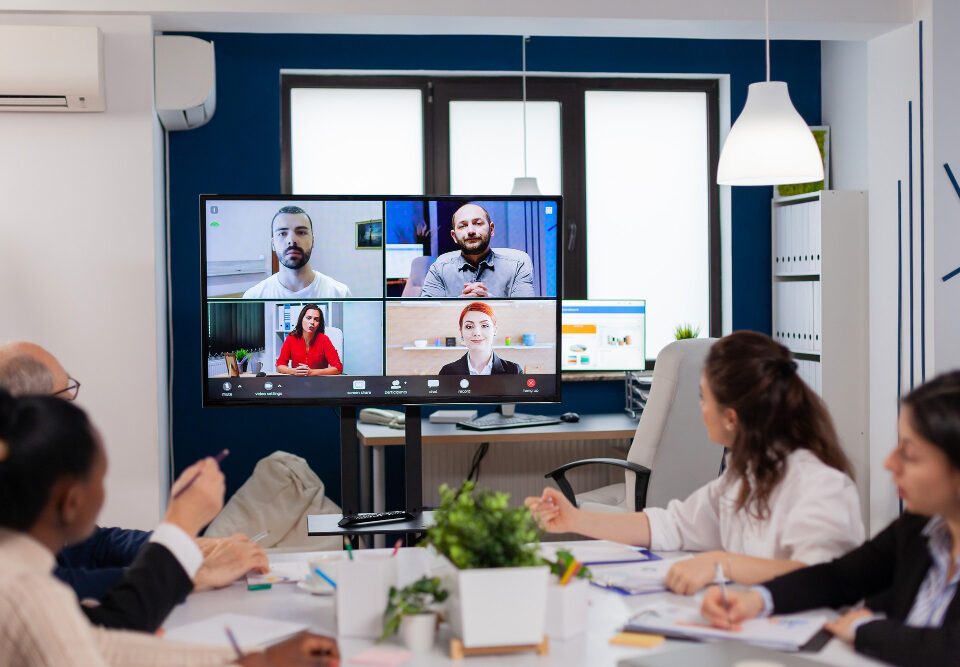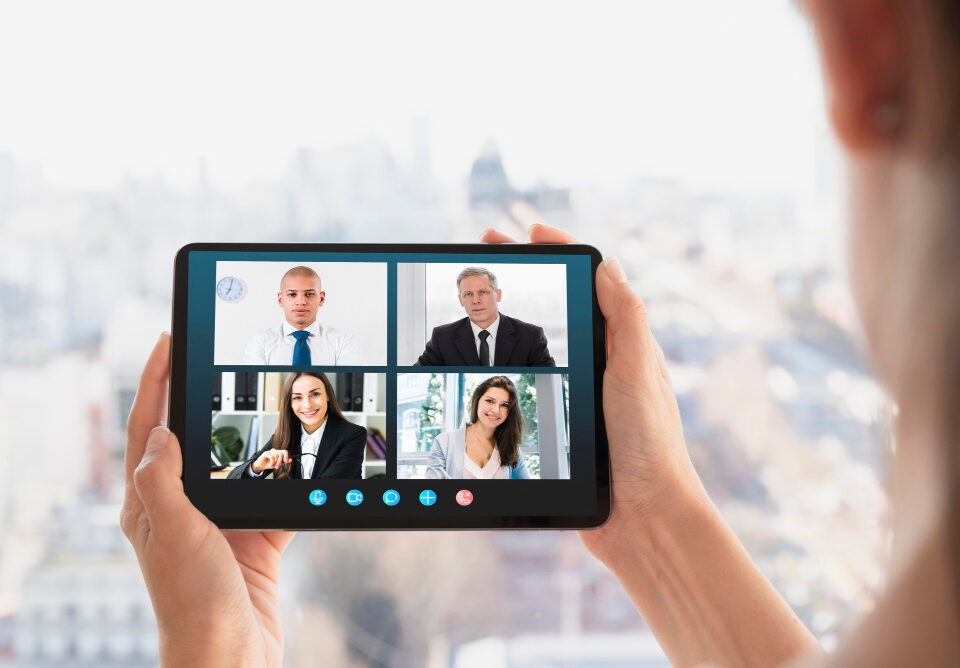- Have any questions?
- +971 4 88 733 70
- sales@datavoiz.com

Enhance Virtual Meetings with a State-of-the-Art Meeting Room
April 17, 2024
Elevate Your Conference Experience With Microsoft Teams Rooms
April 21, 2024Introduction
In this article, we will delve into the crucial topic of Video Conferencing Security and how to safeguard your virtual communications. As the reliance on remote communication continues to grow, it is more important than ever to ensure the privacy and security of your meetings and conversations. We will discuss the potential risks involved in video conferencing, the measures you can take to protect yourself, and the latest security features available to enhance your online interactions. Stay tuned to learn valuable insights on how to keep your virtual communications safe and secure. Join us on this journey towards a more secure virtual communication environment.
Understanding the Importance of Video Conferencing Security
In the realm of virtual connectivity, video conferencing has emerged as a pivotal tool for collaboration and communication. However, amidst this technological advancement lies a critical concern – security. Prioritizing video conferencing security is paramount in safeguarding sensitive information and fostering trust among participants. By embracing robust security measures, organizations can prevent unauthorized access to confidential conversations and data breaches. This emphasis on security not only protects the integrity of virtual communications but also instills confidence in users, promoting a safe and reliable environment for remote collaboration.
Common Risks and Threats Associated with Virtual Communications
Virtual communications are susceptible to a myriad of risks that can jeopardize security and confidentiality. Eavesdropping, phishing attacks, and unauthorized access by hackers pose significant threats. Lack of end-to-end encryption in some platforms further heightens concerns about data security. Social engineering tactics like impersonation can also compromise virtual communications. Recognizing these risks and remaining vigilant against emerging threats is crucial for fortifying defenses and maintaining a secure virtual environment.
Best Practices for Ensuring Secure Video Conferencing
Implementing robust password protocols, encryption measures, and managing participant access are fundamental practices for secure video conferencing. Educating users on security awareness and selecting platforms with maximum security features are also key. Striking a balance between collaboration and security fosters trust and enhances the integrity of virtual interactions.
Choosing the Right Platform for Maximum Security
Selecting a video conferencing platform with end-to-end encryption and robust authentication mechanisms is essential. Platforms should provide regular security updates and comply with industry standards. Secure meeting registration processes and participant authentication further enhance security and confidentiality.
Implementing Secure Password Protocols and Encryption Measures
Utilizing strong, unique passwords and implementing end-to-end encryption ensures private and secure conversations. Two-factor authentication adds an extra layer of protection against unauthorized access.
Managing Participant Access and Permissions
Carefully defining and controlling participant access mitigates the risk of unauthorized entry. Implementing multi-factor authentication and role-based access controls enhances security and fosters a culture of responsibility.
Educating Users on Security Awareness and Best Practices
Encouraging security awareness among users is crucial for safeguarding virtual communications. Real-life scenarios and open communication channels for reporting concerns foster a proactive security culture.
Regularly Updating Software and Firmware for Security Patches
Timely software and firmware updates mitigate vulnerabilities and demonstrate a commitment to cybersecurity. Embracing updates as opportunities for growth enhances the overall security posture.
Conducting Security Audits and Assessments on Video Conferencing Systems
Regular audits identify vulnerabilities and allow for timely remediation actions. By engaging in cybersecurity evaluations, organizations demonstrate a commitment to safeguarding virtual communications.
Securing Physical Environment for Video Conferencing
Ensuring a secure physical environment adds an additional layer of protection against breaches. Implementing privacy screens and physical locks enhances security and confidentiality.
Developing Incident Response and Contingency Plans for Security Breaches
Having a robust incident response plan and conducting regular drills prepare organizations to mitigate security breaches effectively.
Conclusion
Safeguarding virtual communications through robust security measures is essential in today’s digital landscape. By prioritizing security, staying informed about potential threats, and fostering a culture of awareness, organizations can protect sensitive information and ensure the integrity of virtual interactions. Embracing a proactive approach to security enhances stakeholder confidence and fortifies the reliability of virtual communications in an evolving technological landscape.
For more info:





